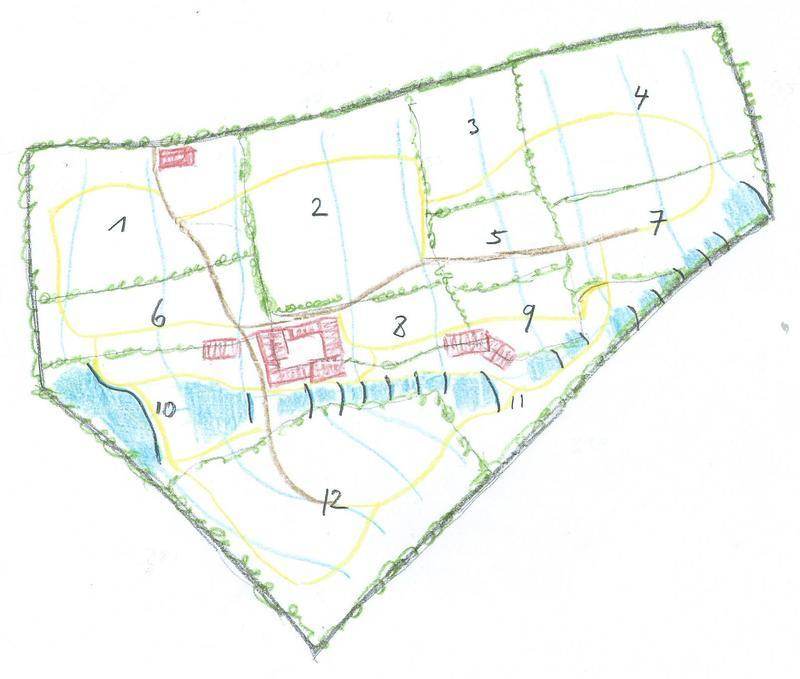Hi Dave,
I guess I'm already somewhere into the process, but am curious what others are doing successfully. The other day I saw a video on growing vainilla in association with cocoa shaded by various tall fruit trees (mango, tamarind, avocado...) and some nitrogen-fixers. These experiences are worth five textbooks each for me - learning from a farmer just happens on another level, I guess, even though few words are exchanged.
We have a lot of examples of permaculture
gardens around Havana, and of course permaculture principles applied in a small food forest-like area on pretty much all peasant farms, but I haven't seen scaled-up versions above, say, half a hectare. Most farmers have little resources to invest, and those who do usually put them in more plantation-style orchards to make quick money (and I say
quick money because they might make a hundred times the average wage on a hectare of land with avocado or banana monocultures, it's ridiculous).
Drawing a map of one of the better offers we have for a 7-hectare plot, I used the existing subdivisions (windbreaking hedges between small pastures) to boil the area down to 12 guilds between 2/10th and 1 hectare each. The blue lines are swales that feed into a series of small dams for carp (other ideas?) and irrigation, the brown and yellow paths. The descent from left to right is about 15 meters over 350 meters distance.

My biggest concern right now is finding examples of tree polycultures that can be scaled to such a size, while remaining moderately complex (7-10 core species per guild) and harvestable for a second income. So, to take the one example I'm farely certain about: mango, tamarind and avocado as overstory, banana for mulch, smaller fruit trees such as chirimoya, caimito (star apple) and café and then sweet potato and perhaps ginger on the forest floor, with geese wondering around. That's the traditional polyculture you find in every backyard that's big enough for it. The probem is that Cuba hasn't looked over it's borders for a long time, and there's a lot of 'standardization' even in the kind of trees you see. Nowadays we can find any seed for sale from some corner of the world, and we have perfect climate for most of them, but this long period of standardization means we don't have many examples of how to grow them around us. Those examples that are in textbooks tend to be monocultures and needy of a lot of intervention over the year.
So once I've the first hectare planted in my mind, things are getting much less certain. All these wonderful species I'd love to grow - there's someone nearby selling cinnamon plants, but he's not sure what guilds to place them in either. How about curry trees? Or feijoa, macadamia? So let's start with a few ideas:
(1. the traditional West-Cuban polyculture)
2. a mediterranean guild with pistaccio, almonds and/or olives. Below could be spices - oregano, laurel, romero...
3. a citrus-based guild with

4. a lighter, lower forest with a more prominent large-shrub layer of maracuya, papaya (we call it frutabomba) and maybe hierba mate. The overstory could be palms (coco, date, peach palm) for a light canopy (and because I love the sound of palms in the wind).
5. a shade-coffee and -cocoa system, where I'd try out vainilla as well. There are some in the east of Cuba, but usually with a 'boring' canopy of leucaenia and timber trees - I'd love to try pecans and jakfruit here, for example, or breadfruit, but that's pure guesswork.
6. a row system with beds for greens, artichokes, melons and other low sun-lovers, interlined perhaps with tomatos or short citrus ?
7. maybe a small field of lower, sun-loving shrubs with openings for long-season crops such as yucca and malanga.
...
You see it's all still rather vague. Our luck is that we will have a few years to try things out (until our doctoral grants run out), and will never depend completely on the farm income (unless everything goes so well, we stop going to our academic jobs). Also, sales structures are a bit difficult here, and it would be wise to concentrate on around ten plants that are then built into several of the 12 systems in different ways and as different varieties (for example, some early avocados need more sun, some late ones less). Mango and avocado are always vendable, but many specialist markets are developing quickly in the city, so in principle I think there are at least 50 species that could find a good market. Besides those we'd cultivate some of everything for ourselves and friends. We're a family of four adults, and a second family would settle on the farm and work full-time as well.
So far for now. I'll watch the film you recommended once it's downloaded, thank you for that!
Abrazos,
Louis

 3
3

































 1
1




































 2
2





















